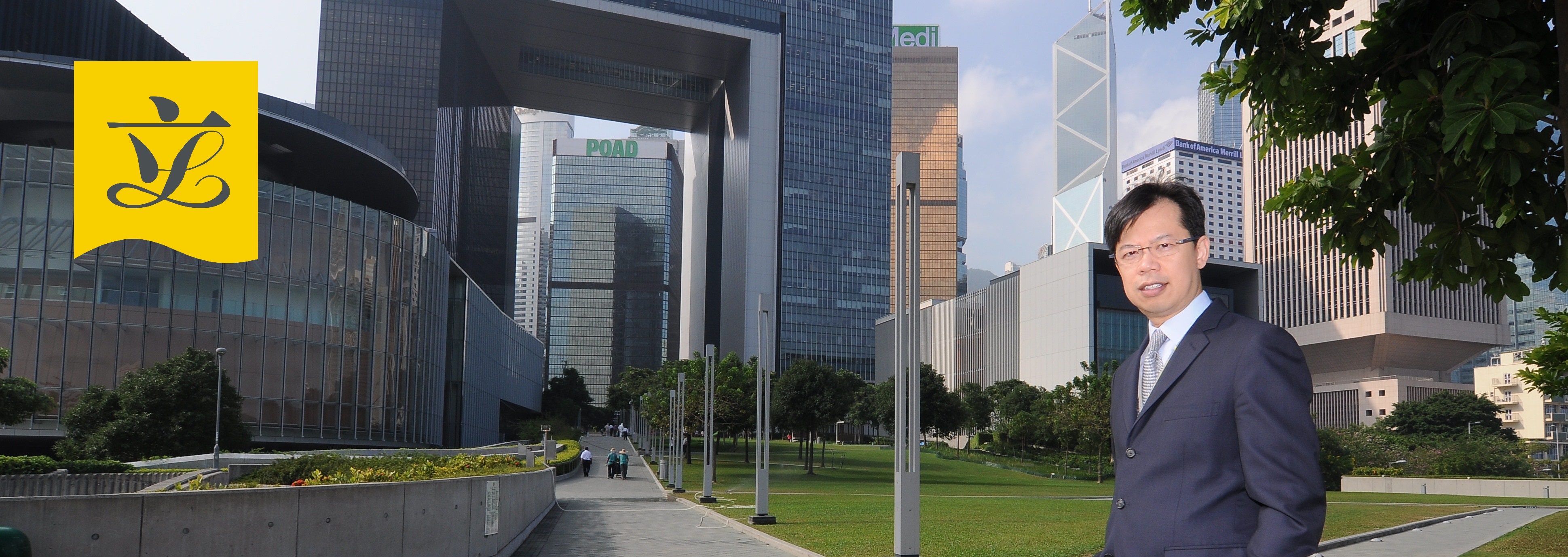Motion on “Actively developing land and optimizing land use to promote the development of the economy and industries”
President, land is the foundation of urban development, and land use should be adjusted to the changing times and social changes. In his latest Policy Address, the Chief Executive proposed to unleash the development potential of existing land, ensure timely land delivery and increase land supply. These policy directions are fully in line with the current situation in Hong Kong. I would like to thank Mr Tony TSE for proposing the motion urging the Government to fully utilize its powers and functions as it is responsible for the management of the land in Hong Kong and to adopt a forward-looking perspective in land planning so as to promote the development of the economy and industries.
For example, I have been working in the banking industry for many years, and as I have witnessed, each stage of the industry’s development has different land use requirements. Recently, there has been an urgent need to establish a banking data center, which is one of the most important elements of a new type of infrastructure, not only crucial for the banking industry but also has an exemplary and leading role in constructing data centres for other industries. The construction of data centres involves the installation, testing, operation and maintenance of a large number of advanced, sophisticated and cutting-edge equipment at a safe and stable site. I am pleased to see that the Government has planned to increase sites for data centres to about 1.5 million sq m by 2026, and it has expanded the I&T sites in Sha Ling in the North District from 20 000 to 100 000 sq m this year. But when I asked if the Administration was confident that the sites could be made available as scheduled, I was told that this would have to rely on the private market supply. As a matter of fact, land supply should meet or even exceed the demand to promote industries’ sustainable development.
Natural or man-made disasters are unpredictable and the banking industry is facing the challenge of keeping systems and data secure and minimizing risk impacts when various disasters happen. Sufficient land can support the provision of back-up sites so that emergency support centres can be established, business continuity plans can be formulated, and it can be guaranteed that operations will not be interrupted.
The banking industry and various trades and industries are facing new land demands in a new stage of development. As we have noticed over the years, being important components of the region’s overall competitiveness, various Mainland cities have continued to build high-tech zones, focusing on promoting the development of related industries.
Lots of land resources in the Northern Metropolis (“NM”) and the Loop will be high-tech zones for the future development of Hong Kong. It is mentioned in the Policy Address that about 17 million sq m of newly formed land will be provided in the coming 10 years. Consideration will be given to the adoption of a “large‑scale land‑disposal” approach and the “unlevelled land” concept whereby tenders will be invited before the completion of land formation to speed up development, which are worth supporting.
However, in the “large‑scale land‑disposal” process, can we consider making reference to the “model of mayors of municipal districts in the Mainland” so that specific officials will be responsible for the management and development of NM? Professionals familiar with the relevant industries will be included in the working group responsible for land tendering and operation to improve consultation, facilitate the attraction of investment and subsequent operation? It is worthwhile for the SAR Government to study and consider that. So long as different functions of the land parcels are better utilized, various industries such as innovation and education industries can blossom.
As for the Kau Yi Chau Artificial Islands, though they are also the focus of Hong Kong’s land supply in the future, it is reasonable and sensible to appropriately postpone the project and carefully review the planning in the light of the latest economic circumstances amidst the existing financial situation.
Apart from developing new land, we can also start with optimizing land use. The Policy Address has also proposed adopting several policies to promote the branding of “tourism is everywhere in Hong Kong” and the Central Harbourfront Event Space has evidently implemented the “single site, multiple use” model. Various art and culture, conferences and exhibitions, and trade expo activities are held, bringing about economic benefits and gathering people. Suppose this idea is applied to other districts. In that case, we can also adopt the “single site, multiple use” model in various districts, combine their characteristics, and organize different activities in the districts from time to time. This will not only enrich the life of local residents and generate economic benefits but also give full play to the unique advantages of the resources of various districts, helping to develop Hong Kong into a diversified tourist destination.
President, while adapting to the development of various industries and managing land to meet their needs, the SAR Government should also continue to be proactive, grasp social development trends, and turn passive adjustments into advance planning so as to build Hong Kong into a more advanced and liveable city.
With these remarks, I support the original motion and all the amendments.
